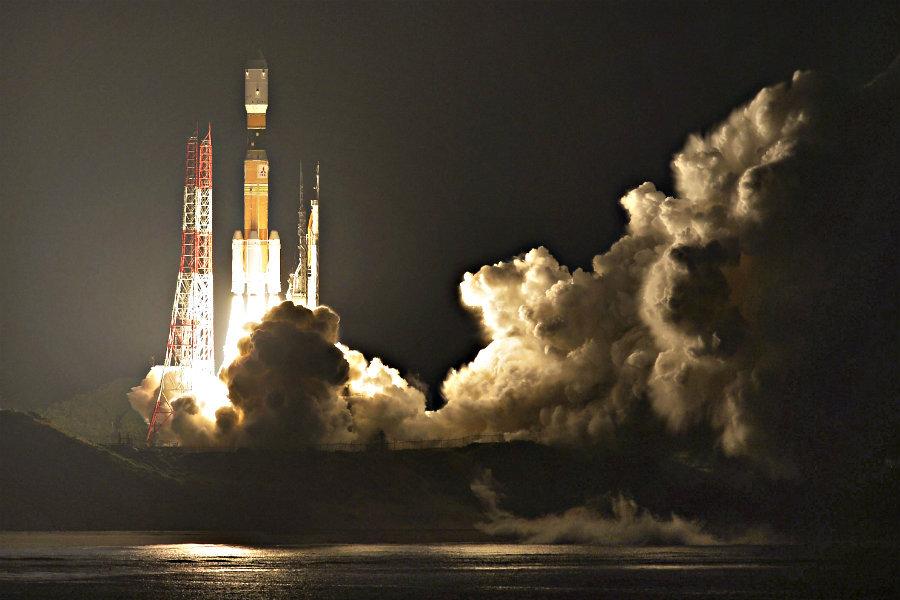Why this Japanese space mission comes with a 2,296-foot whip
Loading...
Japan’s space program, JAXA, soars this weekend after its robotic cargo spacecraft began its four-day journey to the International Space Station (ISS) on Friday.
Onboard the spacecraft, called Kounotori (after the Japanese word for “white stork"), are more than four tons of cargo, including JAXA’s massive debris clearing space whip and a new array of lithium ion batteries for the space station’s solar arrays.
Friday’s cargo launch is particularly important after the failure of a Russian Progress cargo launch earlier this month. Several other cargo launches have met similar fates over the past two years. This is JAXA’s sixth cargo launch to the ISS.
"Spaceflight's not an easy thing," said NASA astronaut Peggy Whitson in an interview aboard the ISS. "We just have to keep pressing ourselves to do the right thing, make sure we're doing all the right tests ... so that we don't have these problems," the Associated Press reported.
Other supplies being delivered by Kounotori include several tons of food and water. The batteries being ferried by the craft will also be immensely helpful for the ISS crew members, who plan to replace the older nickel-hydrogen batteries now used to store energy from the station’s solar panels.
Perhaps the most interesting piece of cargo, however, is a 2,296-foot tether made of aluminum and steel. Space experts hope to use this tether to help clean up the more than 20,000 pieces of space debris that have been judged “potentially hazardous” to further space exploration, as NPR reported.
Scientists have been concerned about space debris for a long time. After six decades of space exploration, hundreds of old satellite pieces and miscellaneous space junk now litter the Earth's orbit zone that many satellites must traverse. As long ago as 1984, the European Space Administration (ESA) began concerned about the dangers this debris might pose.
“Up to now, there has been more concern about radio interference among satellites than about collision. But as ESA points out, a collision would not only damage satellites, it would create a cloud of debris. There would be a growing and uncontrollable risk of further collisions,” reported The Christian Science Monitor’s Robert Cowan in 1984.
“Thus it seems that development of the space frontier has already reached a level where neighborhood trash removal has become a necessity.”
This May, the ISS itself was damaged by a tiny flying piece of debris when it hit the windows of the station’s cupola. The debris, which scientists speculate was likely a flake of paint or small piece of metal, caused a chip in the cupola’s window. While the ISS was built to withstand strikes such as the one in May, the incident is indicative of a bigger problem.
Today, NASA says that it is tracking more than 500,000 pieces of space debris in orbit, all of which could severely damage a satellite or spacecraft. Pieces smaller than a single centimeter are dangerous enough, NASA says, but anything larger than a single centimeter could penetrate the shields of the ISS.
And when two or more pieces of debris strike each other, the result is thousands more pieces of potentially dangerous junk orbiting the planet.
JAXA hopes to eliminate some of this problem with its massive electrodynamic space tether, which the agency hopes will be able to snag and redirect larger pieces of space junk into Earth’s atmosphere, where they will burn up and become harmless upon entry.
If the space tether works, it will be good news for space agencies. Unfortunately, however, JAXA will only have one shot at using the “space whip” on the Kounotori’s return trip to Earth before the cargo shuttle burns up upon re-entry.








